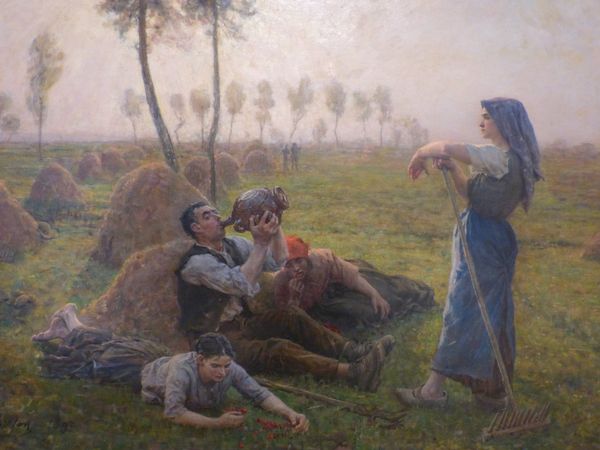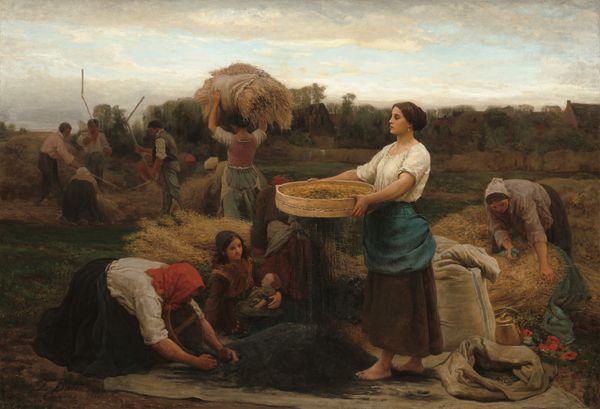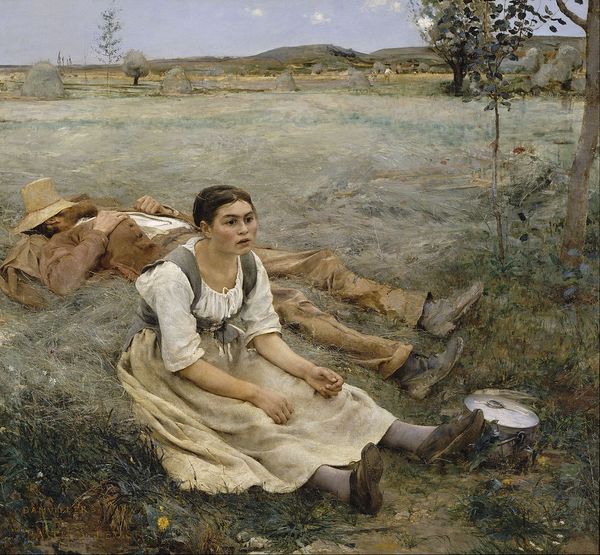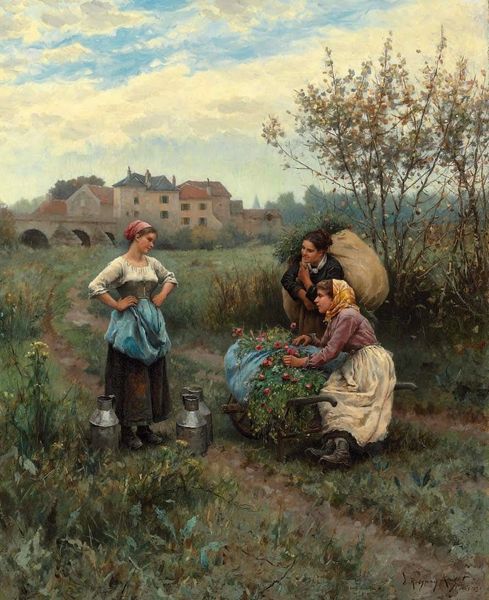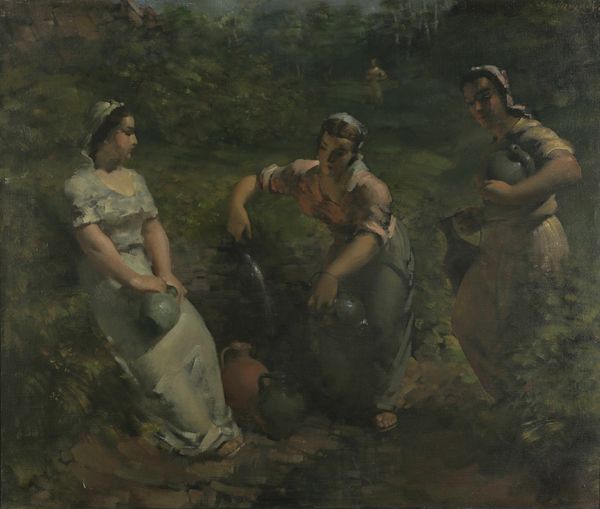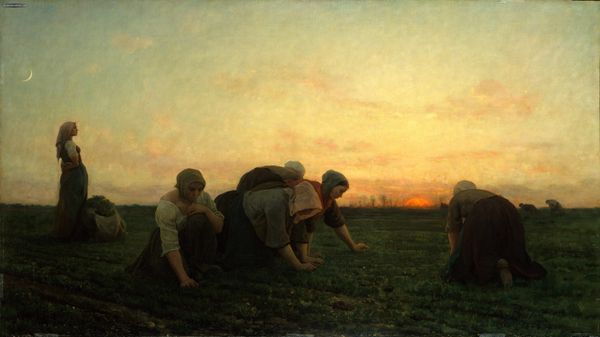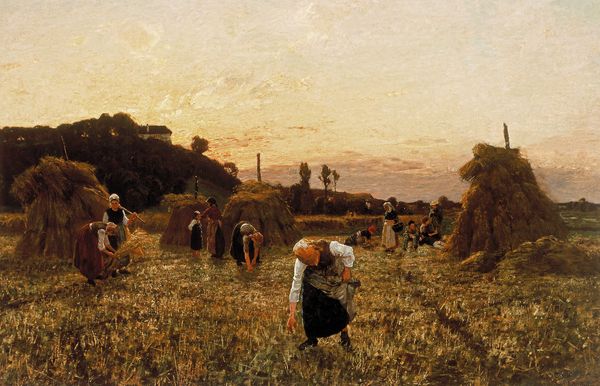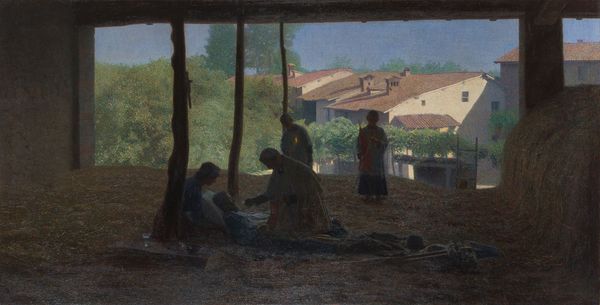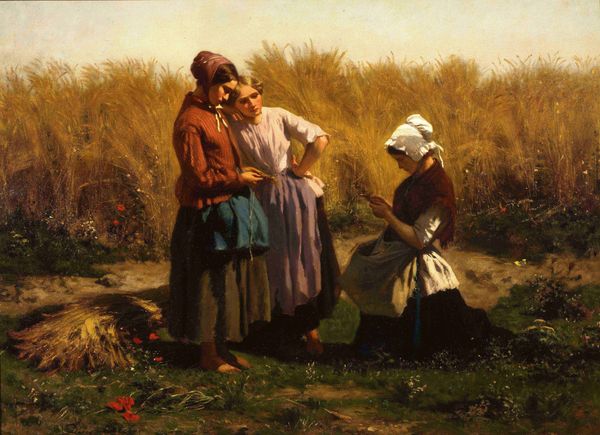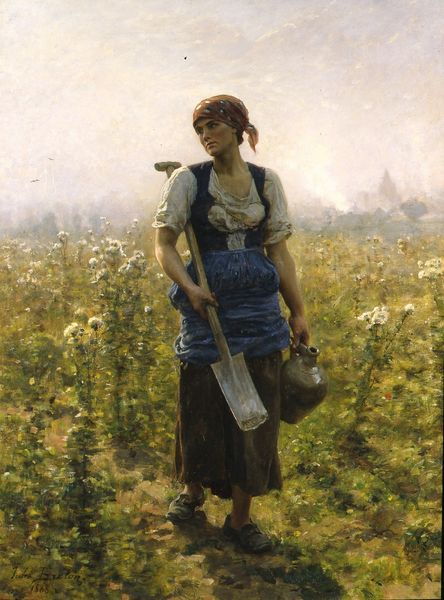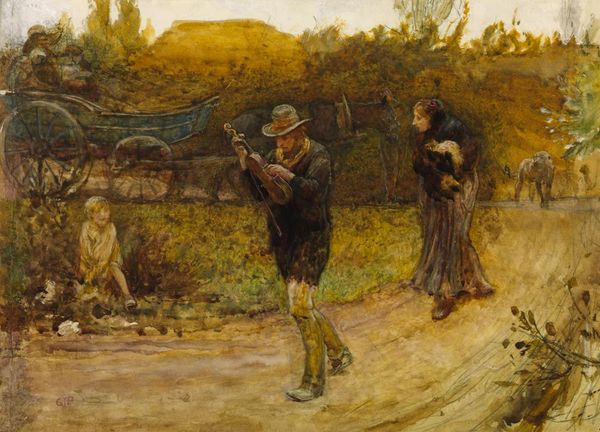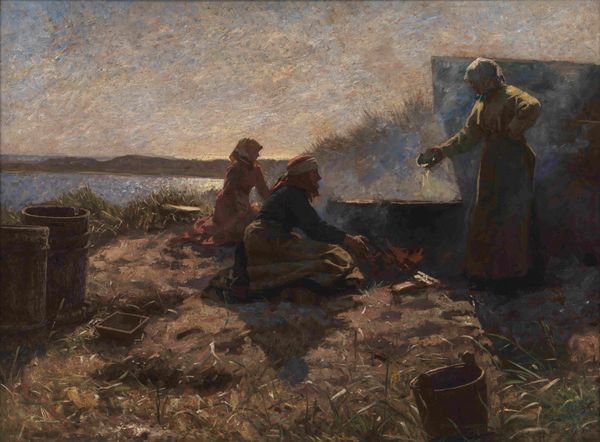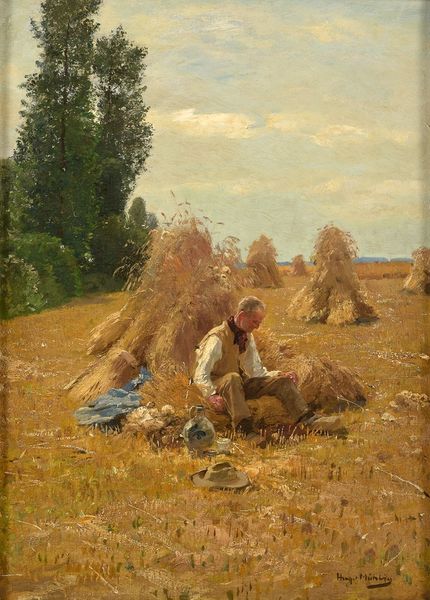
plein-air, oil-paint
#
gouache
#
plein-air
#
oil-paint
#
landscape
#
figuration
#
oil painting
#
group-portraits
#
romanticism
#
genre-painting
Copyright: Public domain
Noè Bordignon painted "Autumn" in Italy, likely in the late 19th century, showing us a pastoral scene of rural life. This wasn't simply a snapshot of peasants, it was a constructed image meant to evoke feelings about Italy’s identity and class structure. The image creates meaning through the clothing, the field and implements. Bordignon painted barefoot children in the fields instead of in school and in the background you can see a church tower suggesting the deep influence of the Catholic church. How does this affect the image? It reminds us that the unification of Italy was followed by social unrest and a widening gap between the rich and poor. Bordignon may have romanticized the rural idyll to contrast with the country's growing pains. Was he making a conservative comment or a progressive critique of the institutions that underpinned Italian society? Art historical research can help us discover the answers by exploring 19th-century Italian social history, popular imagery, and the institutions that shaped artistic production and patronage.
Comments
No comments
Be the first to comment and join the conversation on the ultimate creative platform.
